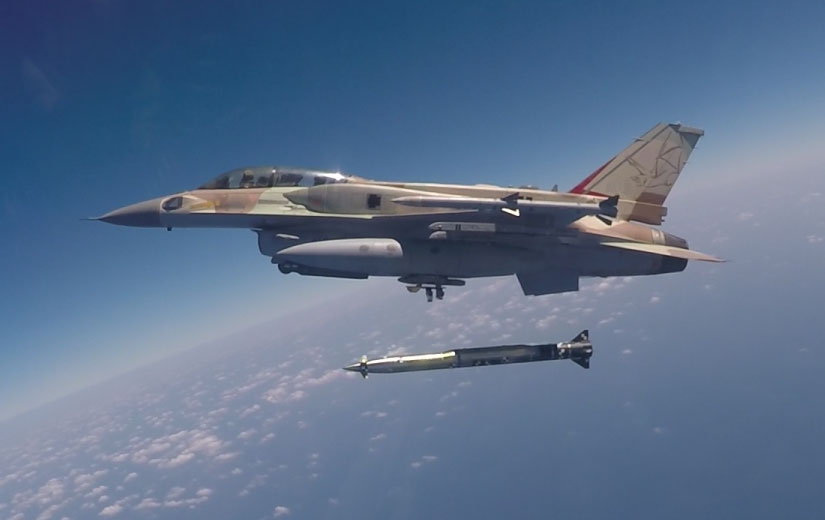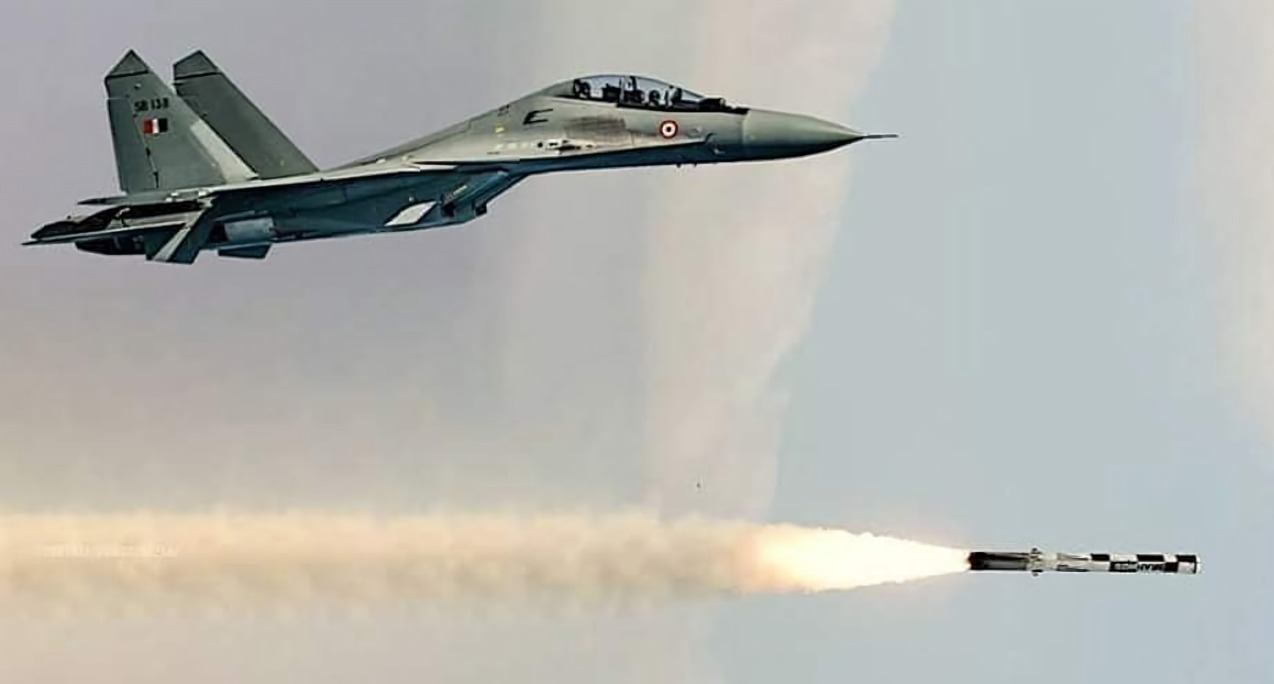Ramping up its long-range strike capabilities, the Indian Air Force (IAF) has inducted the Rampage missile acquired from Israel’s Elbit System, which would be integrated into IAF’s cutting-edge fighters as the service bolsters its combat capability against China and Pakistan.
India’s Ministry of Information and Broadcasting (MIB) recently announced that the IAF is inducting Elbit Systems’ Rampage supersonic, long-range air-to-ground missile. This was widely reported in Indian media this week. The missile will be equipped on the Su-30MKI, MiG-29, and the SEPECAT Jaguar jets.
The Rampage is anticipated to provide the IAF with long-range attack capabilities as a stand-off weapon (SoW) that can engage high-value targets. The MIB said on April 30 that the IAF’s introduction of the missile would enable its combat aircraft to “strike targets up to 250 kilometers away”. The IAF intends to mass produce the Rampage missiles locally under the ‘Make in India’ program.
As per some reports, the missile has probably been integrated with IAF Su-30 and Jaguar units, but it hasn’t been used by the IAF’s MiG-29 UPGs or Fulcrum-as yet. EurAsian Times could not verify these claims.
However, we know that the missile was initially acquired for the Indian Navy’s MiG-29K fighter jets, India’s carrier-based fighter jets. The revelation was made when images published in December 2023 showed the aircraft equipped with the Rampage missiles.

Following the acquisition by the Indian Navy, which became the first known customer of this missile, the weapon was also swiftly acquired by the IAF. The reports of IAF’s procurement of the missile first surfaced in December 2022, with some unknown officials telling the media, “Its addition under an emergency import contract is going to boost the capability of the planes.”
The missile is anticipated to add more teeth to the IAF’s combat capability and firepower since it can be fired from far behind the frontline, especially in case of a border confrontation with Pakistan or China.
Rampage Air-to-Surface missile on #IndianNavy's MiG-29K fighter aircraft. pic.twitter.com/lEM5CXdr0e
— News IADN (@NewsIADN) December 3, 2023
The IAF has a cutting-edge supersonic cruise missile in its inventory that has become synonymous with its combat power: the formidable BrahMos jointly developed with Russia.
BrahMos is technically a ramjet-powered supersonic cruise missile with a solid propellant booster that can be launched from land-based canisters, submarines, ships, and aircraft. Over the years, the missile has been adapted for use by all three services and referred to as a game-changer by military experts. A previous EurAsian Times analysis can be read here.
The Israel-origin Rampage is an invaluable addition to the arsenal of the Indian Air Force and the Indian Navy, as it rides on the back of enhanced defense cooperation between New Delhi and Tel Aviv. However, the BrahMos far exceeds the capabilities of the Israeli missile.
Rampage Is Good, BrahMos Is Better
The Rampage, created by Elbit Systems, is a weapon that can be used in any weather condition and is intended for deep penetration attacks. Its solid propellant rocket motor allows it to reach a maximum speed of Mach 1.6 and a range of 150–250 kilometers at altitudes between 3,000 and 40,000 feet.
It is said to be an air-launched, precision-directed, and fast missile resembling the Guided Multiple Launch Rocket System (GMLRS).
The Rampage has a two-way data link and uses RADALT, SATNAV, and INS together for navigation. It also has an Infrared seeker for terminal homing. The missile can store several infrared photos (taken from different angles) of its primary and secondary targets. It chooses its target as it descends into the target area funnel using target identification and prioritization algorithms.
In contrast, the BrahMos is a supersonic cruise missile powered by ramjets and has a solid propellant booster. It can be fired from land-based canisters, submarines, ships, and airplanes. Its current top speed is Mach 2.8 to 3.0.
The hypersonic version will reach a speed over Mach 5.0. Additionally, the BrahMos has a range of over 290 kilometers, which reaches about 400-500 kilometers in the upgraded versions.
The BrahMos, thus, outperforms the Rampage in both speed and range.
Additionally, one of the most distinctive features of the BrahMos missile is its ability to fly extremely close to the ground to elude missile defense systems. The missile can drop down to ten meters above the earth during the last stage. By this point, the missile depends on either inertial guidance or an active radar seeker. The BrahMos may be more challenging to intercept compared to the Rampage.
While the Rampage missile has a payload capacity of about 150 kilograms, the air-launched BrahMos boasts a maximum payload capacity of about 300 kilograms. Also, while the Rampage missile is considered extremely precise, it may not be the most suitable to take on moving objects — on land or at sea.

Facing long-range surface-to-air missiles and other formidable air defenses from China and Pakistan, the Rampage is a practical and affordable way for India to increase its air-launched stand-off strike capacity.
While the BrahMos has a better range, speed, and payload capacity, the Rampage would be useful owing to its precision. Additionally, the air-launched BrahMos missile is currently only mounted on the Su-30MKI. So, the induction of Rampage would be helpful as it would provide stand-off capabilities to jets like the MiG-29 and the archaic Jaguars.
The missiles together would be a strategic tool against China and Pakistan as it would allow the IAF to attack critical targets inside the hostile neighbors’ territories without crossing the border and entering the enemy’s airspace.
That’s a key capability the country has been chasing after the confrontation with Pakistan following the Balakot strike of 2019. Both missiles would drastically improve the survivability of the host aircraft.
- Contact the author at sakshi.tiwari9555 (at) gmail.com
- Follow EurAsian Times on Google News




